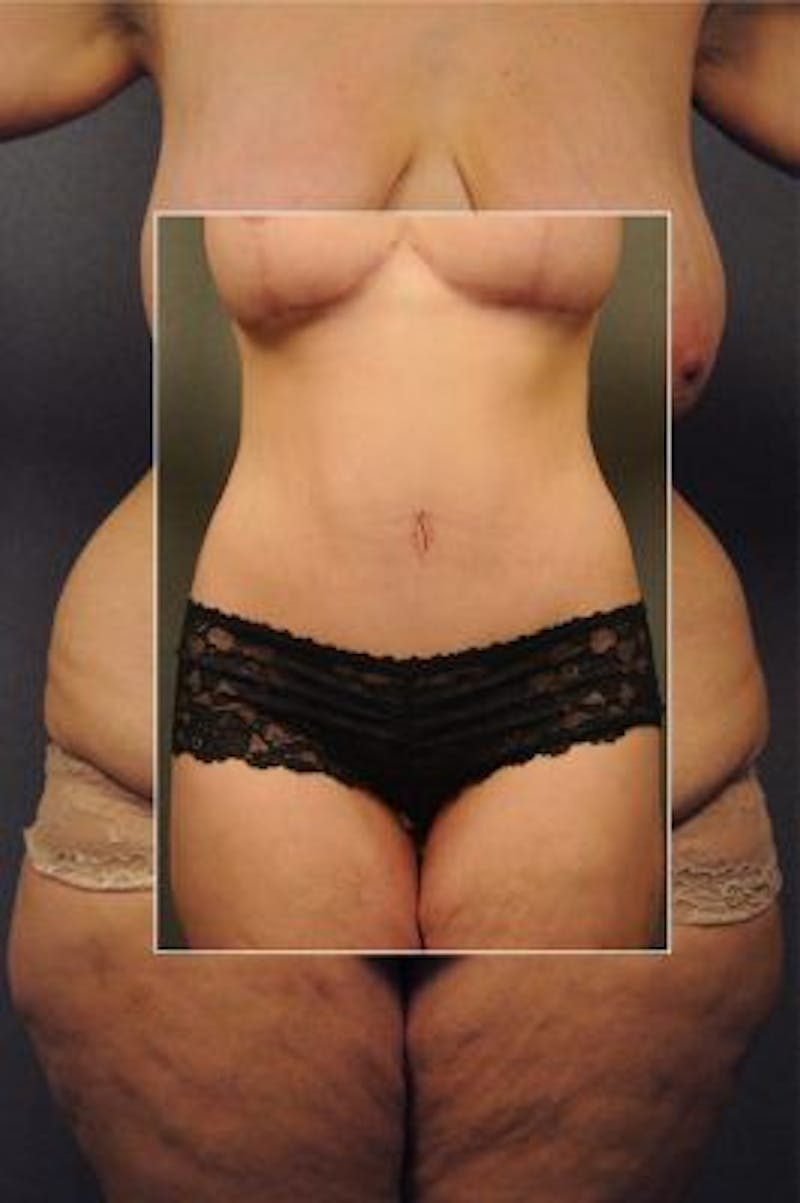
Perhaps one of the biggest myths for overweight people, and especially those that are obese, is that losing weight will fix their body woes. Although weight loss results in improved self-esteem, better health and an overall sense of accomplishment (much deserved!), the full effects of weight loss are betrayed when hidden beneath the excess skin that is left behind.
Losing a massive amount of weight is only the first step in body transformation. After the weight is gone, individuals are left with excess, draping skin. Everywhere that weight loss has occurred, from the tummy to the arms to the thighs to you-name-it, there will be skin, skin and more skin. Such is the story of a thin person trapped in a fat person’s body.
Exercise has no bearing on this extra skin. Of course, exercise is encouraged for muscle tone and good health, but excess skin is flat out exercise resistant! After all of the hard work in losing the weight, you now need a partner to complete your new look. You need a plastic surgeon.
Plastic surgery after weight loss can involve a number of surgical procedures; several of which may be needed to fully remove redundant skin. It is a necessary step after massive weight loss in order to truly reveal the body beneath. Commonly, excess skin will be left draping on the back, stomach, arms, breasts, legs and even affect the genitals. Several plastic surgery procedures are necessary to address all of these areas, and weight loss patients will need multiple visits to the operating room.
Panniculectomy
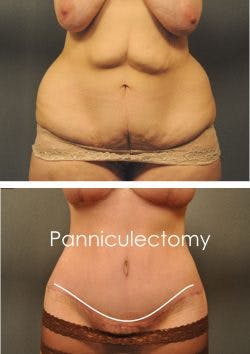
After massive weight loss, the skin of the abdomen below the belly button hangs in an apron covering the lower abdomen and pubic area. This skin flap is called a pannus. Not only is this unattractive, but the skin folds are also prone to rashes, skin ulcers, and other irritations. The removal of this skin is called a panniculectomy. This procedure differs from a tummy tuck, in that often a tummy tuck involves tightening the stomach muscles (rectus muscles), whereas the panniculectomy removes the excess skin and underlying tissues.
A panniculectomy requires a large incision from hipbone to hipbone and around the belly button and another incision that runs vertically down to the pubic region. The naval can be moved to keep the area proportionate and symmetrical looking. Once this flap of skin is released, it is excised leaving a scar very low on the abdomen for concealment.
Reverse Abdominoplasty
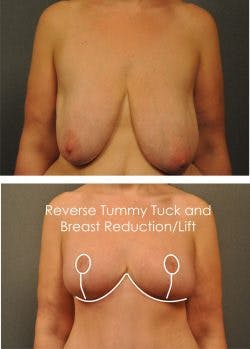
A panniculectomy removes the extra skin from the lower abdomen, but what about the folds above? A reverse abdominoplasty procedure is as the name implies. In this procedure, an incision is made in the natural fold of the breast and the tissues beneath freed up from the underlying tissue. This allows the plastic surgeon to pull the skin upward and remove the excess in a hidden incision.
This procedure will also address the breasts that too are affected by massive weight loss. Once the extra weight and bulk of the breasts are lost, the breasts are left hanging. During the reverse abdominoplasty, the plastic surgeon can perform a mammoplasty or breast reduction using the same incision. Other incisions made need to be made around the nipple and vertically downward (anchor incision) to return form and proper position to the breasts.
Beltlipectomy or Body Lift
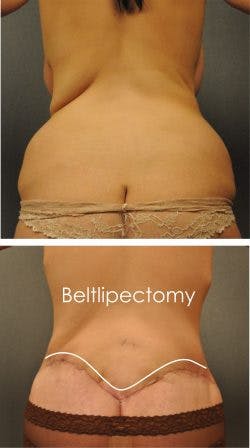
After massive weight loss, many patients can be left with hanging skin folds in the back, flanks, and thighs. A beltlipectomy involves a circumferential incision around the lower trunk (the beltline) in which then both the panniculectomy and tightening and excision of the skin on the back can be performed. Through a beltlipectomy also allows for surgical reshaping the hips, thighs, and buttocks. This procedure is also known as a body lift.
Mons Pubis Reduction
No part of the body is immune to weight gain. That includes the genital area. Mons pubis reduction surgically removes the fatty and connective tissues from the mons pubis. This is usually accomplished through liposuction or direct excision. Depending on the patient’s personal preference and circumstances, the procedure can be performed under local or general anesthesia and takes about an hour to perform. Recovery involves some swelling and mild to moderate discomfort.
Arm Lift or Brachioplasty
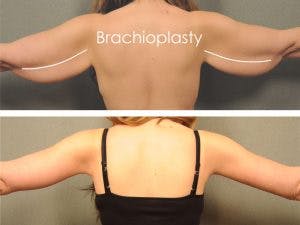
One of the most popular procedures for patients who have recently lost large amounts of weight is the arm lift or brachioplasty. After losing weight, the upper arms may be left with sagging, drooping sections of skin underneath the arms. These are typically referred to as bat wings.
Brachioplasty involves an incision from the armpit to elbow wherein the surgeon can remove a significant amount of excess skin, and reshape the contours of the arm for a smoother, firmer appearance. It also provides you with a more proportionate, toned look.
Are you ready for post-weight loss plastic surgery?
When is it the right time for post-weight loss plastic surgery? Although we make each determination individually, the best candidates for post-weight loss body contouring usually have a few things in common:
- They are done losing weight and have maintained a stable weight for at least 6 months
- They are in good health with no serious underlying medical conditions
- They are cleared for plastic surgery by their primary care physician
- They stick to a healthy, varied diet
- They don’t smoke
- They are mentally ready to go through more than one surgery
- They can take the time they will need to recover
- They have realistic expectations about the results they are likely to achieve
Plastic surgery after weight loss is a major endeavor, but truly the only way to realize the beauty of your weight loss success is to rid yourself of the skin left behind. The number of procedures that you will be faced with may be daunting, so having confidence and a great rapport with your plastic surgeon is important. He will be your partner through multiple surgeries. Make sure to select a board-certified plastic surgeon. Do your research thoroughly including asking for before and after photos, patient testimonials and referrals. There will be a host of information provided to you during your initial consultation which should include the specific procedures recommended and a timeline of when each should be performed and which procedures can be done simultaneously. An extensive review of the risks of plastic surgery after massive weight loss will also be discussed.
Massive weight loss does not occur overnight, as anyone that has had the discipline to do so will tell you. Patience and perseverance are also needed when it comes to plastic surgery after weight loss. In the end, the reward of liberating your inner thin self is well worth the journey.
For more information on plastic surgery after weight loss, schedule a consultation with Dr. Gilbert Lee of Changes Plastic Surgery & Spa in San Diego, CA. Dr. Lee is triple board-certified and has been awarded Top Doc in Plastic Surgery by the San Diego County Medical Society each year since 2007. He has decades of experience in reshaping and restoring body contours through successful plastic surgery. For more information, call 858-720-1440 or fill out our convenient contact form below.

